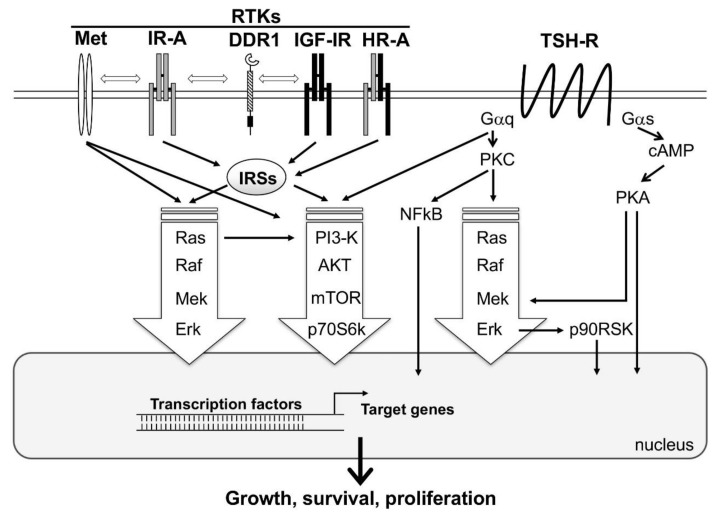Figure 1.
A simplified representation showing the interplay between the major signaling cascades activated by tyrosine kinase receptors (RTKs) and TSH-Receptor (TSH-R). Activation of TSH-R on the cell surface by TSH results in the activation of two major classes of G proteins, namely Gαq and Gαs. Gαs, through the second messenger, cAMP, activates the major signaling pathway PKA/Mek/Erk. In addition, PKA may directly stimulate transcription factors in the nucleus, resulting in the activation of target genes involved in thyroid follicular cells function, growth, and survival. Gαq activates the signaling cascades PKC/Ras/Raf/ERK/p90RSK, PI3-K/AKT/mTOR/p70S6k, and PKC/NFkB. RTKs (i.e., Met, IR-A, DDR1, IGF-1R and HR-A) directly or via IRSs, induce MAPK (Ras/Raf/Mek/Erk) and PI3-K/AKT/mTOR/p70S6k signaling cascades. All these pathways interact with each other, resulting in a multitude of cross-talks. MAPK and PI3-K cascades are common to both TSH-R and RTKs downstream-mediated signaling, and are represented with big arrows, as they are the major players of follicular cell proliferation.

